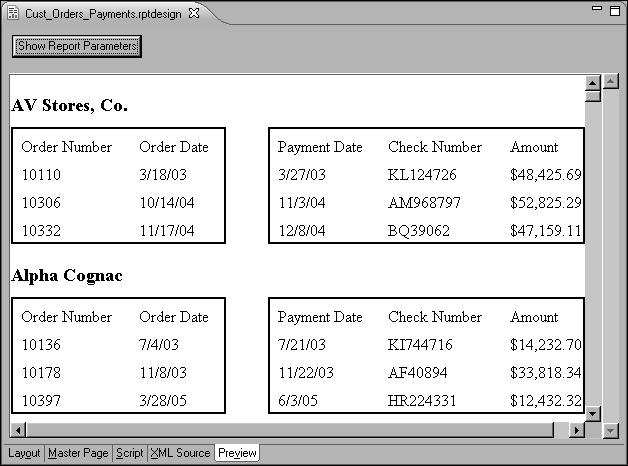This section provides step-by-step instructions for building a report that displays a list of customers. For each customer, the report displays order and payment information. The order information and payment information are in separate, adjacent subreports. The customer report is the master report, which is also called the outer report. The orders and payments subreports are the detail reports, which are also called the inner reports.
Each report accesses data from a different table in the sample database, Classic Models. The customer report, orders subreport, and payment subreport use data from the Customers, Orders, and Payments tables, respectively.
A common field, CUSTOMERNUMBER, links the reports. The value of the linking field in the master report determines what data appears in the detail reports. For example, if the customer number in the master report is 173, the detail reports display the order and payment information for the customer whose ID is 173.
Figure 13‑1 shows a portion of the finished report.

In this tutorial, you perform the following tasks:
